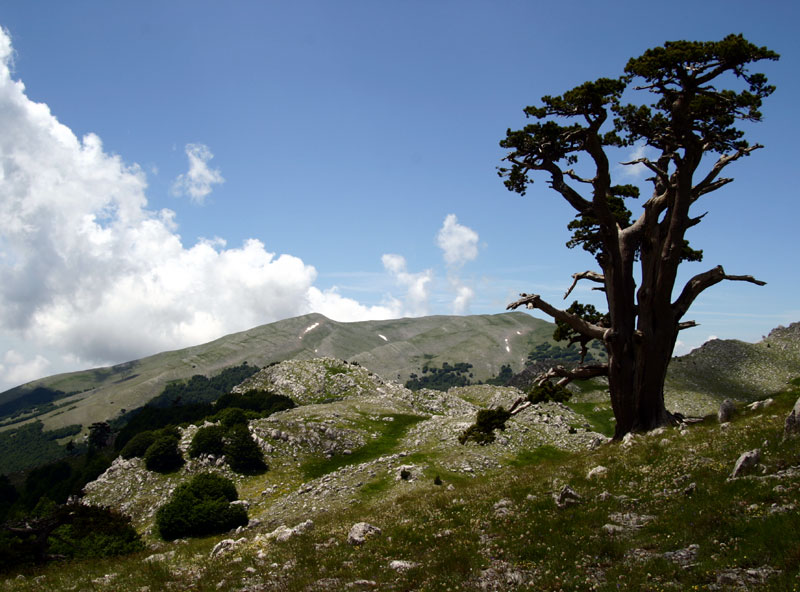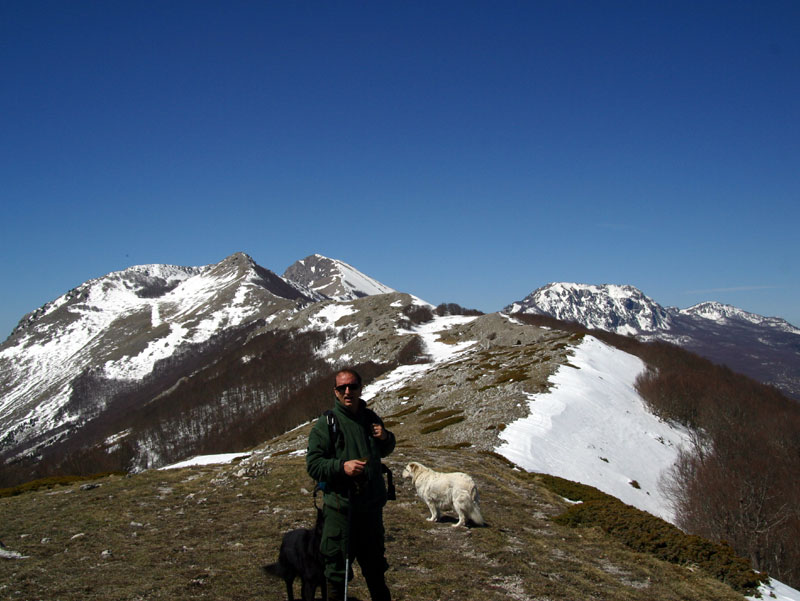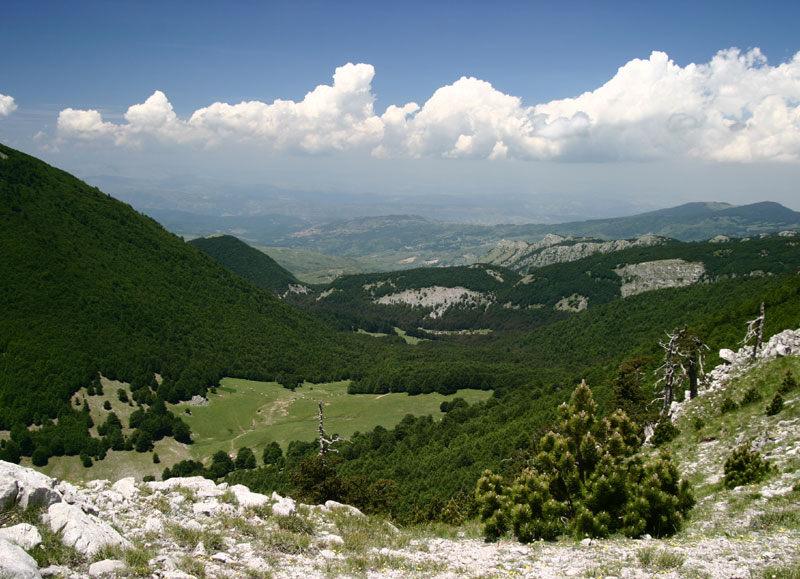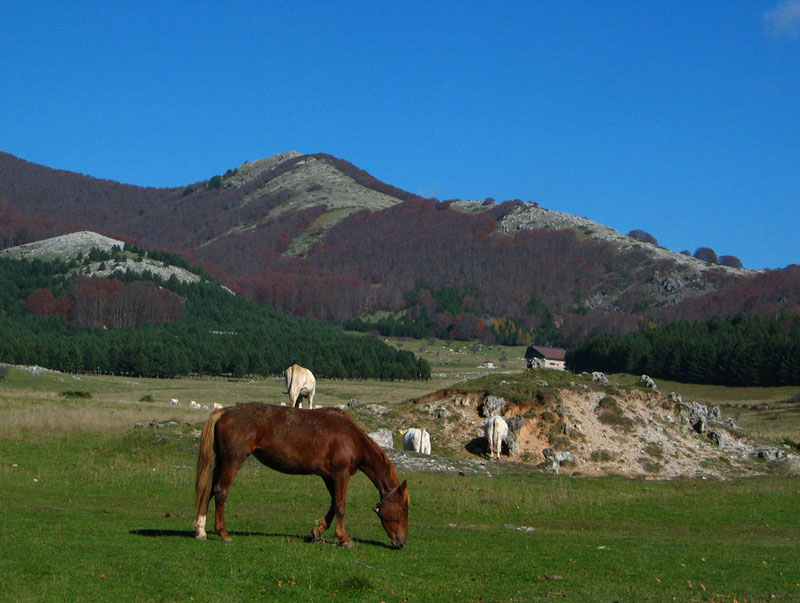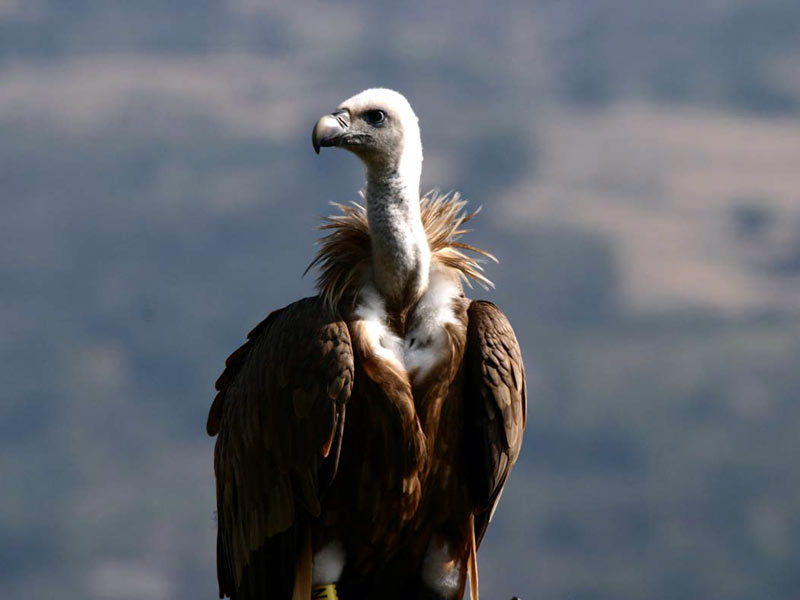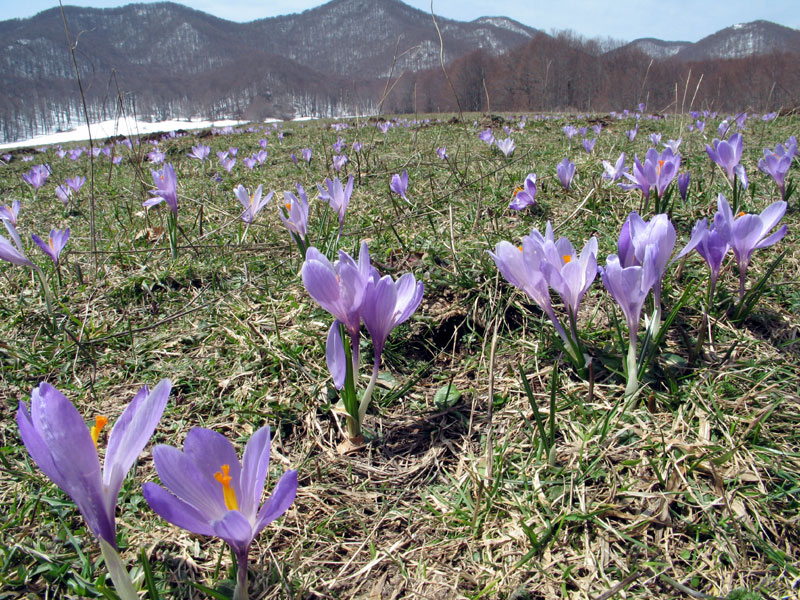Protected Area
Identity Card
- Pollino National Park:
- Land Surface Area: 192'565.00 ha
- Higher altitude (m): 2'268
- Protected flora: 6 species (Italian text)
- Protected wildlife: 82 species (Italian text)
- Habitats: 27 types (Italian text)
- Regions: Basilicata, Calabria
- Provinces: Cosenza, Matera, Potenza
- Municipalities: Acquaformosa, Aieta, Alessandria del Carretto, Belvedere Marittimo, Buonvicino, Calvera, Carbone, Castelluccio Inferiore, Castelluccio Superiore, Castelsaraceno, Castronuovo di Sant'Andrea, Castrovillari, Cerchiara di Calabria, Cersosimo, Chiaromonte, Civita, Episcopia, Fardella, Francavilla in Sinni, Francavilla Marittima, Frascineto, Grisolia, Laino Borgo, Laino Castello, Latronico, Lauria, Lungro, Maierà, Morano Calabro, Mormanno, Mottafollone, Noepoli, Orsomarso, Papasidero, Plataci, Praia a Mare, Rotonda, San Basile, San Costantino Albanese, San Donato di Ninea, San Giorgio Lucano, San Lorenzo Bellizzi, San Paolo Albanese, San Severino Lucano, San Sosti, Sangineto, Sant'Agata di Esaro, Santa Domenica Talao, Saracena, Senise, Teana, Terranova di Pollino, Tortora, Valsinni, Verbicaro, Viggianello
- Establishment Measures: L 67 11/03/1988 - L 305 28/8/89, DM 31/12/90, DPR 15/11/93, DPR 2/12/97
- PA Official List: EUAP0008
- Park Authority: Ente Parco Nazionale del Pollino
- Further managed Protected Areas:
- Riserva Statale Valle del Fiume Lao
- SIC Pozze di Serra Scorsillo
- SIC Valle del Fiume Lao
- ZPS Massiccio del Monte Pollino e Monte Alpi
- ZPS Pollino e Orsomarso
- ZSC Fagosa-Timpa dell'Orso
- ZSC Fiume Rosa
- ZSC Bosco della Farneta
- ZSC Bosco di Chiaromonte-Piano Iannace
- ZSC Bosco Magnano
- ZSC Bosco Vaccarizzo
- ZSC Cima del Monte Dolcedorme
- ZSC Cima del Monte Pollino
- ZSC Cozzo del Pellegrino
- ZSC Fonte Cardillo
- ZSC Gole del Raganello
- ZSC Il Lago (nella Fagosa)
- ZSC La Falconara
- ZSC La Montea
- ZSC La Petrosa
- ZSC Lago Duglia, Casino Toscano e Piana di S.Francesco
- ZSC Madonna del Pollino Località Vacuarro
- ZSC Monte Alpi - Malboschetto di Latronico
- ZSC Monte La Caccia
- ZSC Monte La Spina, Monte Zaccana
- ZSC Monte Sparviere
- ZSC Piano delle Mandre
- ZSC Piano di Marco
- ZSC Pollinello-Dolcedorme
- ZSC Pozze Boccatore/Bellizzi
- ZSC Pozze di Serra Scorzillo
- ZSC Rupi del Monte Pollino
- ZSC Serra del Prete
- ZSC Serra delle Ciavole-Serra di Crispo
- ZSC Serra di Crispo, Grande Porta del Pollino e Pietra Castello
- ZSC Serrapodolo
- ZSC Stagno di Timpone di Porace
- ZSC Timpa dell'Orso-Serra del Prete
- ZSC Timpa delle Murge
- ZSC Timpa di S.Lorenzo
- ZSC Timpone della Capanna
- ZSC Timpone di Porace
- ZSC Valle del Fiume Abatemarco
- ZSC Valle del Fiume Argentino
- ZSC Valle del Fiume Esaro
- ZSC Valle Nera-Serra di Lagoforano
- ZSC Valle Piana-Valle Cupa
- Pollino Geoparco Mondiale Unesco
Pollino National Park
Pollino National Park is the largest protected area which has been
recently established in Italy. It involves the Southern Apennines in
Calabria and Lucania. It stretches out from the Tyrrhenian Sea to the
Ionian Sea, from Cozzo del Pellegrino to Serra Dolcedorme, from Piani
di Campolongo, Novacco and Lanzo, to Piani del Pollino, from the rivers
Argentino and Abatemarco, to the ravines of Lao and Raganello, to the
streams Peschiera and Frido. The territory, large and unpolluted,
preserves rare and exceptional endemic species, like the Bosnian Pine,
the Golden Eagle and the Roe Deer. The natural places, covered with
large beech tree woods, snow, formed by dolomitic rocks, morainic
deposits, glacial cirques, scattered with gorges and caves, are
enriched with paleontological sites, like Grotta del Romito and Valle
del Mercure, and archaeological sites dating back to the Greek
colonization, with Sanctuaries, Monasteries, Castles, Historical Town
Centers like Laino Castello, environments characterized by rural life,
popular feasts, ethnic-linguistic minorities of Albanian origin of the
15th-16th century.
The whole Park area includes Pollino and
Orsomarso massif. It is a mountain chain belonging to the Southern
Apennines, at the border between the regions of Basilicata and
Calabria, in the heart of the Mediterranean area. Its mountains
represent the highest peaks of Southern Italy, covered with snow most
of the year, from November to May. From its summits, over 2,200 meters
of altitude above sea-level, you can see westwards the Tyrrhenian
coasts of Maratea, Praia a Mare, and Belvedere Marittimo, and eastwards
the Ionian coast from Sibari to Metaponto.
The nature and culture of Pollino, the global frame of its physical and
human heritage, which is manifold and complex, wide and differentiated,
go from naturalistic, geomorphological, vegetational, botanic, and
faunistic values to a unique landscape and historical, archaeological,
ethnic, anthropological, cultural, and scientific values.
The most "prestigious" and famous area is made of Dolomitic rocks,
calcareous ramparts, fault walls of tectonic origins, precipices, very
deep gorges, karst caves, the so-called "timpe" or gorges of volcanic
origin, swallow holes, plateaus, meadows, high altitude pastures,
morainic deposits, glacial cirques, erratic boulders.
Environment
The mainly mountain territory consists of three main mountain systems which, between the Ionian and the Tyrrhenian Sea, reach the highest peaks of the Southern Apennines.
Pollino Massif has the highest summits of the Park: Serra Dolcedorme (2,267m), Mt. Pollino (2,248m), Serra del Prete (2,181m), Serra delle Ciavole (2,127m), and Serra di Crispo (2,053m).
Further information (Italian text)
The Park History
Several definitions have been given to Pollino Park: paper park, academy park, phantom park, soap opera park, Penelope's park, philosophical park. These names derive from the fact that no other protected area in Italy has been able to reach the supremacy in debates, researches, projects, plans which have all inevitably not succeeded. Word flows coming from very far, if, already in 1958, in order to take the bearings on the need to enhance the massif, the volume "Precedenti storici per la valorizzazione scientifica e turistica del Pollino..." edited by A. Miglio was published.
Further information (Italian text)
Fauna
Among the Dolomitic peaks, the Golden Eagle circles in the sky over the ridges. The areas covered with beech tree, chestnut tree, and turkey oak woods are populated by an endangered fauna: the Apennine Wolf, the Orsomarso Roe Deer, the Black Woodpecker, the Peregrine, the Eagle Owl, and the Raven.
Further information (Italian text)
Flora
In the highest areas there is a relict population of the last glaciation: the rare Pinus leucodermis, the symbol of the Park. The mountain slopes are dominated by thick, impenetrable beech tree, chestnut tree, and turkey oak woods rich in musk, mushrooms, fruits, and aromatic herbs. In these places, springs of clear and cold water descend in the valleys to fill in the gorges of Raganello, Lao, and Rosa. Moreover, the open spaces are rich in another kind of nature, with a gentle landscape of cultivated corn fields, of trees, wild pear trees, hollies, blackberry bushes, mistletoes, hawthorns, brooms, thistles, flowers, violets, poppies, peonies, and orchids.
Further information (Italian text)





